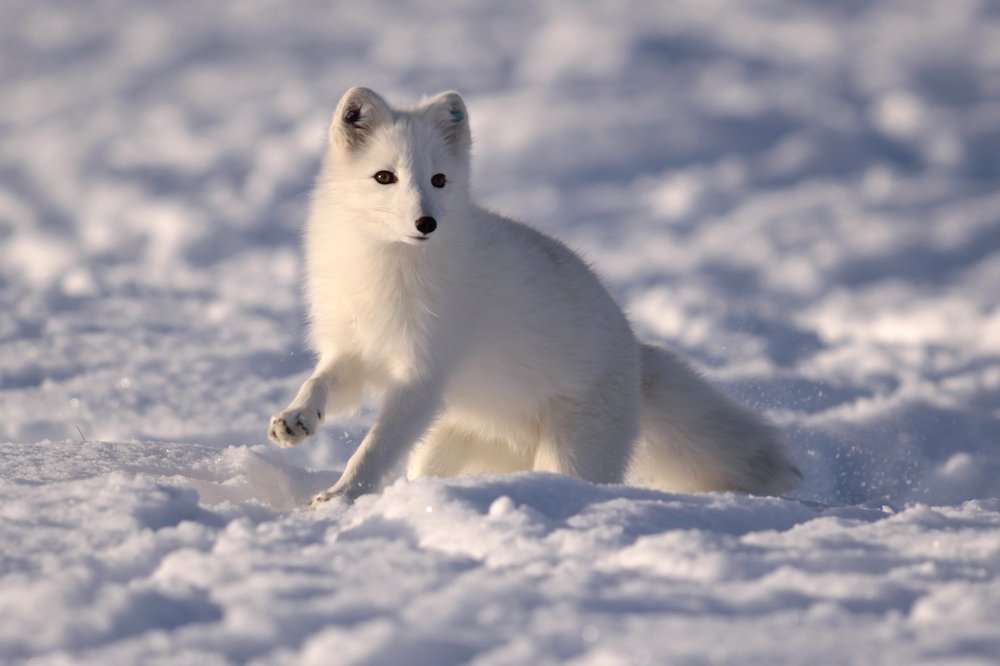
Description
Scientific Name: Vulpes lagopus
Lifespan: Up to 14 years in captivity and 3–4 years in the wild
The Arctic fox (Vulpes lagopus) is a small fox. It is well recognized for its thick, insulating fur, which doubles as camouflage. It is well adapted to live in cold climates. The Arctic fox has thick, dense fur that is brown in the summer and white in the winter. Not only does it have a thick coat that keeps it warm in the winter, but it also has a usually a bushy tail, rounded ears, rounded body with short legs, small, and a short muzzle.

Behavior
Polar foxes are nocturnal creatures. They share a home with one adult male, the young, and two vixens, one of them is a non-breeding female who was born the previous year and helps care for the following litter. Arctic foxes construct burrows deep under the earth’s surface to call home. They have lived in their multi-entranced burrows for centuries, passing down generations of foxes. Arctic foxes either hoard food or store body fat in order to endure the severe winters and lack of food. The fox utilizes its hearing and sense of smell to identify creatures travelling through tunnels beneath the snow to find prey throughout the winter. Animal nomads include Arctic foxes. 95.5% of Arctic foxes use commutes during the winter, which stay in the fox’s home range.
Distribution
Russian, European, and North American Arctic and Subarctic regions are home to Arctic foxes. They were hunted to extinction on Jan Mayen, but they also once lived in Greenland, Iceland, Fennoscandia, Svalbard, other Barents Sea islands, northern Russia, islands in the Bering Sea, Alaska, and Canada as far south as Hudson Bay.
As Pet
Observe the following when taking care of an arctic fox:
Since they are accustomed to consuming a lot of meat in the wild, arctic foxes require a diet rich in protein. Giving them a meal of raw meat and bones or a commercial diet specifically designed for arctic foxes can achieve this.
Because Arctic foxes require a lot of exercise, it’s crucial to provide them lots of room to run around and play. It is best to have a sizable enclosure with lots of toys and hiding spots.
Due to their susceptibility to heat, Arctic foxes must be kept in a cool or chilly environment. Ideal temperature ranges from 50 to 60 degrees Fahrenheit.
A calm and peaceful atmosphere is crucial since Arctic foxes are extremely sensitive to loud noises and rapid movements.
Because they are opportunistic eaters, Arctic foxes can change their diet according to what food is available. They typically consume uncooked small mammal meat in the wild, including that of lemmings, voles, rodents, birds, eggs, and carrion. When necessary, they will also consume berries, plants, and other types of flora. Arctic foxes can be kept in captivity and fed a diet of commercial dry food, meat, and vegetables.





